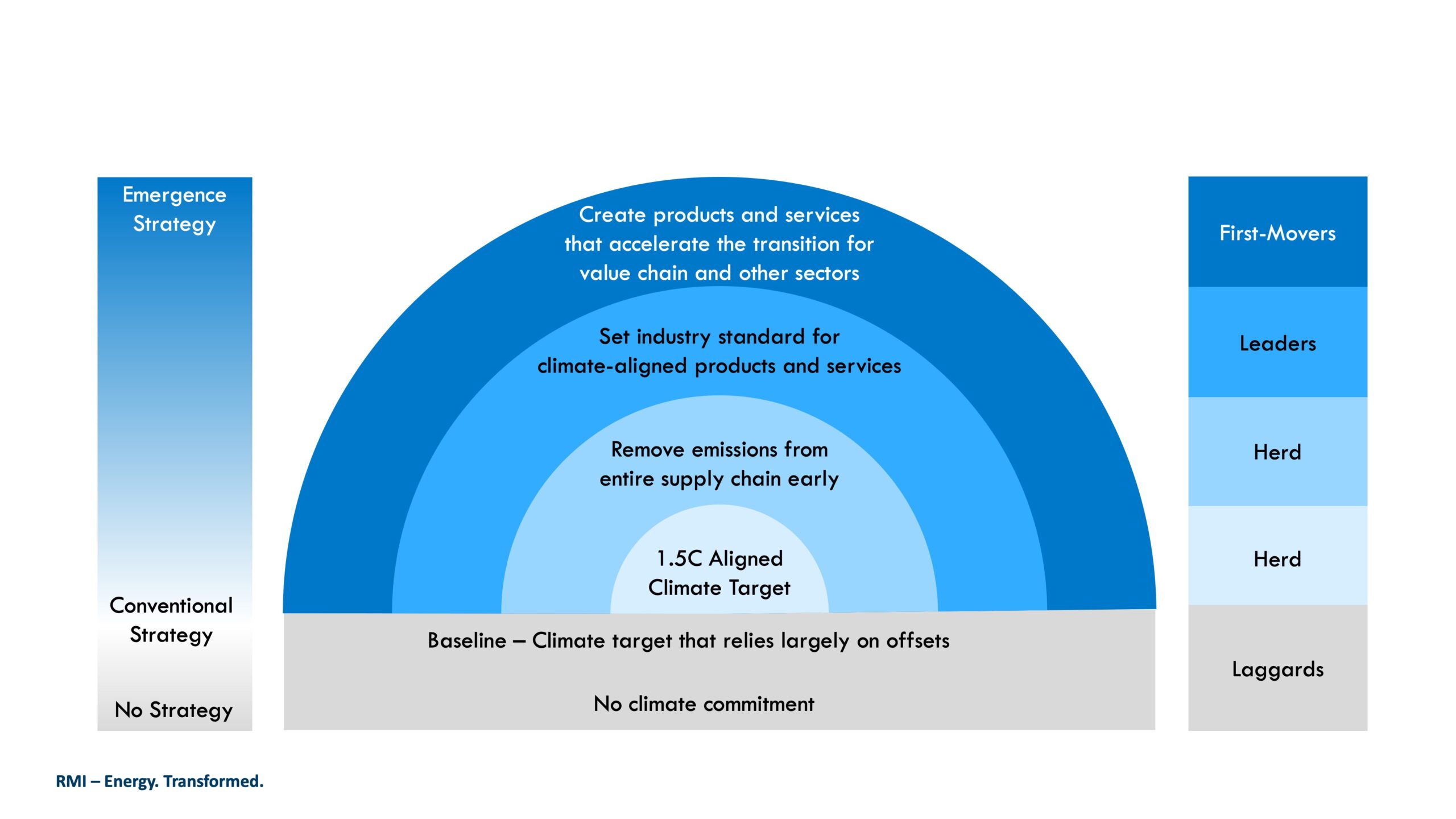
Emergence Strategy: A Systems Approach to Corporate Climate Action
How leading companies can move beyond incremental emission-reduction steps to seize business opportunities that entail transformative changes.
How can companies take advantage of the exponential changes unfolding in energy technologies and systems as they develop strategies to achieve net-zero emissions in their own businesses and value chains? This series of emergence strategy case studies provides examples of how leading companies are moving beyond incremental emission-reduction steps to seize business opportunities that entail transformative changes. Here, we provide a brief introduction to emergence strategy and its implications.
What?
Emergence strategy applies systems thinking tools to identify new business opportunities, overcome obstacles to system transitions, and pinpoint the roles a company can play as a leader, catalyst, advocate, or collaborator in relation to other key actors in a system. This process is different from traditional strategy approaches that focus primarily on competition, but the two may be used in complementary ways. In addition, emergence strategy leverages corporate climate action building blocks such as science-based net-zero commitments and scope-based emissions disclosures where these have already been developed.
Why?
Turning climate action from a bolt-on set of requirements for existing business activities into a strategic priority can unlock new avenues for innovation and value creation for many companies. Because the changes needed to address the climate crisis will require transitions across many key industries and value chains, companies looking for strategic opportunities must focus on how they can participate in accelerating and influencing systems change to deliver new solutions. Emergence strategy is a way of searching for and capitalizing on fundamental changes that are emerging in a business ecosystem, sector, or value chain in connection with corporate climate action.
Who?
Companies most likely to deploy emergence strategies are those looking to widen the aperture of their search for new value-creation opportunities aligned with their climate and sustainability goals. The systems approach helps companies develop focused strategies for engaging other stakeholders, including companies up and down value chains, governments, and civil society organizations to advance new technologies, introduce new products or services, or evolve market structures.
How?
The emergence strategy process entails three functions that are applied iteratively:
- System sensing to identify opportunities for profitably delivering sustainable solutions,
- System solutions to overcome barriers based on understanding the s-curve dynamics and patterns
- System roles to describe how a particular organization is best suited to act and mobilize others to drive and shape systemic change.
Together, these allow a company to assess the strategic landscape using systems thinking tools and choose where and how to collaborate and compete.
When?
Companies use emergence strategy when they want to look beyond incremental steps to reduce emissions and explore new business opportunities that are linked to transformative change in products and services, business models, or supply chain relationships.


